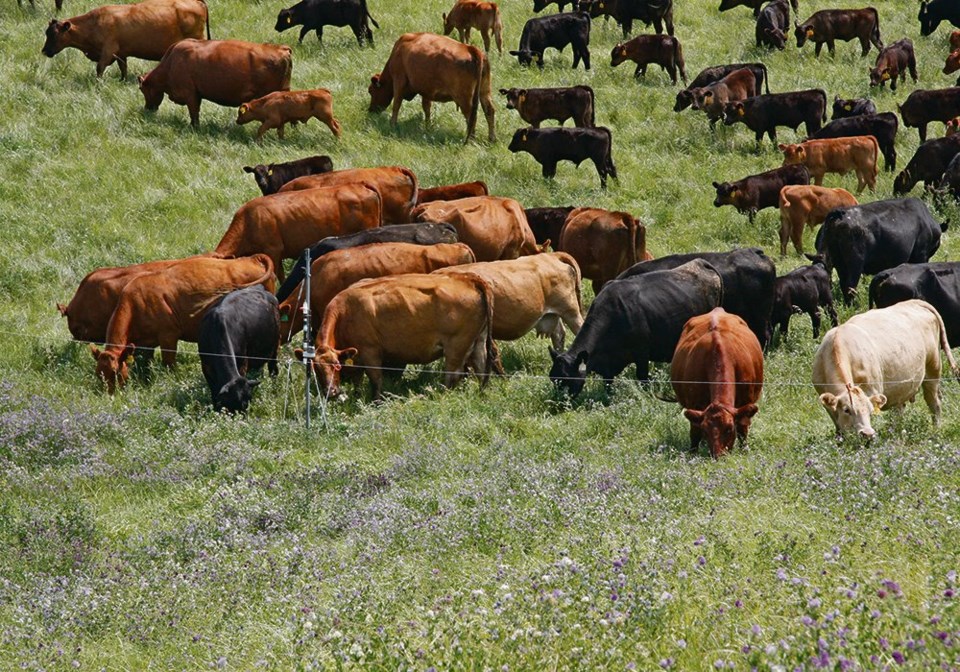WESTERN PRODUCER — A federal program that provides up to $75,000 per applicant to help producers tackle climate change by improving farming practices will especially benefit young farmers and ranchers, says an expert.
Although the On-Farm Climate Action Fund (OFCAF) aims to help all qualifying applicants, it can be a challenge for younger or first-generation farmers, said Greg Paranich of the Grey Wooded Forage Association in Alberta.
“It’s the chicken and the egg,” he said. Young producers who can’t afford to improve their practices “won’t be able to start getting those economic benefits and those environmental benefits that contribute to that bottom line, so this I think is a really good opportunity for those farmers in particular.”
However, the program could also help established producers launch projects that would otherwise remain on the backburner, said Paranich, the association’s agricultural field specialist.
“It’s not an overnight idea, it’s something that’s been percolating,” he said about plans people have for the future of their operations. “And the one thing that’s been holding things back can be the financial capability or capacity, and this would help alleviate a lot of it.”
Ottawa is providing up to $182.7 million to 12 organizations across Canada to deliver funding for OFCAF, said a Feb. 22 federal statement. The initiative is designed to help producers adopt beneficial management practices that reduce greenhouse gas emissions and store carbon.
Farmers and ranchers can apply for up to 85 percent of the cost of adopting such practices to a maximum of $75,000, said a statement by Alberta’s Results Driven Agriculture Research (RDAR) agency. The organization is delivering $33 million of OFCAF’s funding in the province.
RDAR will focus on in-field nitrogen management, rotational grazing practices and cover cropping. It opened the process for its share of the applications on Aug. 4.
The deadline for the current funding year is Nov. 7 at 4:30 p.m. MST, said a statement by the agency. Applications for 2023 will open in early February and OFCAF has been extended to June 2024, it said.
The initiative was outlined at a recent workshop held by the Grey Wooded Forage Association in Lacombe, Alta.
“For our program, we have to have a minimum of $25,000 of gross farm income,” said Fiona Briody, OFCAF program manager for RDAR.
“You must work with a qualified professional to develop a plan, and that really lays out what are your activities and what are the cost differences for those activities. You then complete an application that must include the plan, and one thing you have to do for us is provide permission for post project inspections.”
RDAR requires that successful applicants pay 100 percent of the upfront costs “with no payment for in-kind, and you submit your invoices again at the end of the project,” she said. “Our minimum project cost is $2,500.”
Other OFCAF funding includes $10 million delivered through the Canadian Forage and Grassland Association (CFGA). It is designed to help producers plan and implement rotational grazing practices in Alberta as well as British Columbia, Saskatchewan and Quebec.
“So, the four areas we’re looking at are fencing, watering systems, the improving of pastures, and grazing plans,” said Sonja Shank, environmental farm plan program co-ordinator for the Agricultural Research and Extension Council of Alberta.
CFGA’s program differs from RDAR’s because it contains an ability for producers to use in-kind costs, said Tatyana Irodenko, manager of the Grey Wooded Forage Association. “So, that’s really appealing to someone who doesn’t have a whole lot of money to fork out.”
Shank said it also requires a lower minimum gross income of $10,000 for Alberta, which was because the minimum is $5,000 in Quebec.
“We had to pick some middle ground because this is a national program, so $10,000 kind of seemed to be where the CFGA decided to fall.”
When asked if RDAR’s requirements about gross farm income set the bar too high for new producers in Alberta, Briody said, “even though I say $25,000, we do a review of the new farmers on a case-by-case basis …
“We do need a business plan and some vision of what they’re doing, and I don’t want them just to be thinking they’re going to start a farm. We want to see that they own something and they’re starting, but may not have that income, so we will look at new farms because we don’t want to exclude them totally if they can’t quite get there, right?”
Briody said double dipping with other OFCAF programs for the same beneficial management practice is not allowed. As applications are reviewed, some practices may be closed as targeted outcomes are reached, she added.
Cow-calf producer Clinton Harris, who attended the workshop, raises about 500 cattle on his farm near Red Deer. He sees an issue involving a requirement that new practices by applicants in 2022 must be completed between April 1, 2022, and March 31, 2023.
However, the federal government’s fiscal year doesn’t line up with the current farming year.
“I grew cover crops with my silage this year, and I was just wondering how to apply for the funding and what’s the processes in it,” said Harris in an interview. “I pre-bought my seed in December, so it’s not qualifying because it’s April 1.”

